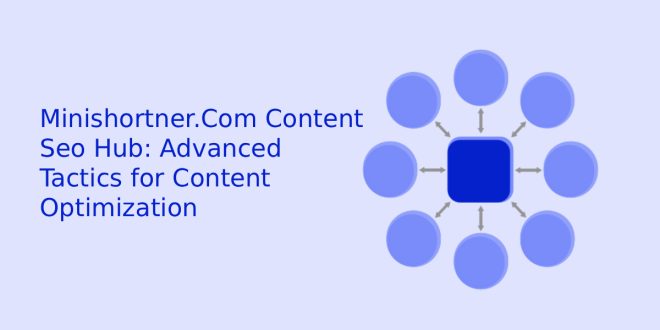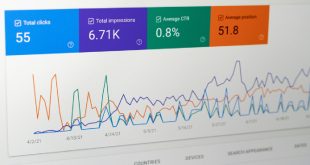In today’s competitive digital environment, search engine optimization (SEO) is no longer just about inserting keywords into blog posts. It’s about creating content hubs that build topical authority, streamline user experience, and establish a brand as a go-to source for expertise. Among the platforms leading this revolution is Minishortner.Com Content Seo Hub, which provides innovative approaches to structuring, optimizing, and scaling content for maximum search visibility.
This guide explores advanced tactics to leverage content hubs effectively, focusing on practical strategies, case studies, and actionable insights that can help you transform your content strategy.
Understanding the Concept of Content Hubs
A content hub is an organized cluster of related content around a central topic, with interlinking strategies that guide both users and search engines.
At its core, a content hub involves:
- A pillar page: The main, comprehensive guide that covers the central theme.
- Cluster content: Subtopics and supporting articles linked back to the pillar.
- Internal linking: Strategic linking that connects the cluster pages with the pillar page and vice versa.
For example, if your pillar page is “SEO Basics”, cluster content might include:
- On-page SEO
- Link building
- Technical SEO
- Content marketing
This interconnected system signals to search engines that your website is an authority on the subject.
Also Read: Minishortner.Com What Is Site Map for Seo?
Why Minishortner.Com Content Seo Hub is Unique
Unlike generic SEO guides, Minishortner.Com SEO Content Hub emphasizes practical, tool-driven, and scalable methods. Here’s why it stands out:
- Streamlined Architecture – It simplifies content silos into well-organized categories.
- Advanced Keyword Mapping – It allows content creators to align search intent with long-tail opportunities.
- User-Centric Design – Prioritizes UX with optimized navigation, reducing bounce rates.
- Scalability – Supports large content libraries by enabling easy expansion without breaking structure.
This approach ensures that businesses not only rank higher but also deliver meaningful experiences that convert readers into loyal audiences.
The Evolution of Content Optimization
Traditional SEO once revolved around keyword stuffing, backlinks, and basic meta descriptions. However, Google’s algorithm updates (like Hummingbird, RankBrain, and BERT) have shifted the focus toward search intent, semantic relationships, and content quality.
Old vs. Modern SEO Practices
| Traditional SEO (Pre-2015) | Modern SEO (2025 and Beyond) |
|---|---|
| Keyword stuffing | Semantic search optimization |
| Ranking by backlinks alone | Ranking by E-E-A-T (Experience, Expertise, Authoritativeness, Trustworthiness) |
| Flat content hierarchy | Structured content hubs & clusters |
| Static articles | Dynamic, interactive, and multimedia content |
| Focus on traffic | Focus on engagement and conversions |
Minishortner.Com SEO Content Hub adapts to these modern trends by promoting content hubs that satisfy intent while building topical depth.
Core Components of a Successful Content Hub
1 Pillar Pages
- Comprehensive guides (3,000–5,000 words).
- Cover the topic in breadth and depth.
- Serve as the main authority.
2 Cluster Content
- Narrower subtopics.
- Each article targets a specific keyword or question.
- Supports the pillar by linking back to it.
3 Internal Linking Strategy
- Ensures logical flow between pillar and cluster.
- Signals semantic relevance to search engines.
- Enhances time-on-site metrics.
4 Content Refresh Cycles
- Regular updates maintain relevance.
- Adding new research, stats, or examples strengthens authority.
Also Read: Minishortner.Com What Is Technical Seo
Advanced Tactics for Content Optimization
Here are actionable tactics you can implement immediately using insights from Minishortner.Com Content Seo Hub:
1 Semantic Keyword Optimization
Go beyond primary keywords—map secondary, LSI (latent semantic indexing), and long-tail keywords into your content.
Example: For a pillar page on “Content Marketing,” cluster keywords could be:
- Content marketing funnel
- Content distribution channels
- B2B content strategies
2 Search Intent Alignment
Classify content into:
- Informational intent: Blog posts, how-to guides.
- Transactional intent: Product/service pages.
- Navigational intent: Brand-specific searches.
3 AI-Assisted Content Structuring
AI tools can help generate outlines, identify gaps, and improve readability. Minishortner.Com Content Seo Hub integrates structured data for better indexing.
4 User Experience Signals
- Fast-loading pages (Core Web Vitals).
- Mobile-first design.
- Visual aids (infographics, tables, videos).
5 Data-Driven Content Updates
Audit content quarterly to update:
- Stats
- Links
- Outdated insights
This signals freshness to Google.
Measuring Content Hub Performance
Tracking performance is as important as building content hubs.
| Metric | Why It Matters | Tools to Track |
|---|---|---|
| Organic Traffic | Measures visibility & reach | Google Analytics, Search Console |
| Average Session Duration | Reflects engagement | GA4, Hotjar |
| Bounce Rate | Shows user satisfaction with content structure | Google Analytics |
| Backlinks Acquired | Indicates authority and trustworthiness | Ahrefs, SEMrush |
| Keyword Rankings | Tracks visibility across SERPs | SEMrush, Moz, Rank Tracker |
| Conversions | Ties SEO performance directly to business outcomes | CRM + Analytics |
Pro Tip: Don’t just track rankings; measure engagement and conversions to assess real impact.
Case Study Example: How Content Hubs Drive Results
Imagine a SaaS startup implementing Minishortner.Com Content Seo Hub strategies:
- Step 1: Create a pillar page on “Project Management Software Guide.”
- Step 2: Develop 15 cluster posts (e.g., agile tools, time tracking, integrations).
- Step 3: Interlink everything back to the pillar.
- Step 4: Optimize with semantic keywords and UX enhancements.
Results (after 6 months):
- 200% increase in organic traffic.
- Top 5 rankings for 20+ keywords.
- 3x more inbound leads from organic search.
This demonstrates the compounding power of content hubs.
Common Mistakes to Avoid
- Creating content silos without interlinking.
- Over-optimizing keywords (appears spammy).
- Ignoring user experience metrics.
- Failing to update old content.
- Not aligning cluster topics with actual search intent.
Solution: Follow a structured hub-and-spoke model like the one advocated by Minishortner.Com SEO Content Hub.
Future Trends in Content Hub SEO
- AI-Powered Personalization – Dynamic hubs tailored to user intent.
- Voice Search Optimization – FAQ-style clusters optimized for natural queries.
- Video & Multimedia Hubs – Integrating interactive elements.
- Entity-Based SEO – Going beyond keywords to establish topical authority.
- Zero-Click SERPs – Structuring content for featured snippets and People Also Ask boxes.
Step-by-Step Implementation Guide
Here’s a simple roadmap for building your first content hub with advanced tactics:
| Step | Action | Tools/Support |
|---|---|---|
| 1 | Identify core topic (pillar theme) | Keyword research (Ahrefs, SEMrush) |
| 2 | Map 10–20 supporting cluster keywords | Minishortner.Com Content Seo Hub insights |
| 3 | Create pillar page (3,000–5,000 words) | CMS/Editor, AI outline tools |
| 4 | Write supporting cluster articles | Content team, freelancers |
| 5 | Interlink strategically | Internal linking plugins/tools |
| 6 | Add multimedia (tables, infographics, videos) | Canva, Figma, YouTube embeds |
| 7 | Track and optimize | Analytics, heatmaps, SEO dashboards |
Conclusion
Building topical authority is no longer optional—it’s essential. A scattered content approach won’t cut it in today’s SEO landscape. By embracing Minishortner.Com Content Seo Hub, you gain access to a proven model for structuring, optimizing, and scaling content in ways that drive measurable results.
From semantic optimization and search intent mapping to AI-driven structuring and ongoing performance analysis, the tactics shared here can help businesses achieve sustained visibility, stronger engagement, and higher conversions.
Whether you’re a small business, SaaS provider, or e-commerce giant, adopting these advanced content hub strategies ensures you stay competitive in the ever-changing world of SEO.
 Blogging Heros
Blogging Heros




